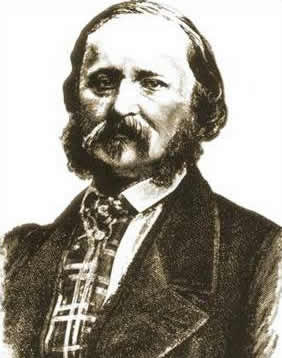
Today, I'd like to delve into some of the oldest playable audio recordings known to researchers: The phonautograms of Édouard-Léon Scott de Martinville, the first of which were recorded in 1859.
I'll let Wikipedia explain:
The device consisted of a horn or barrel that focused sound waves onto a membrane to which a hog's bristle was attached, causing the bristle to move and enabling it to inscribe the sound onto a visual medium. Initially, the phonautograph made recordings onto a lamp-blackened glass plate. A later version (see image) used a medium of lamp-blackened paper on a drum or cylinder. Another version would draw a line representing the sound wave on a roll of paper. The phonautograph was a laboratory curiosity for the study of acoustics. It was used to determine the frequency of a given musical pitch and to study sound and speech; it was not understood at that time that the waveform recorded by the phonautograph was in fact a recording of the sound wave that needed only a playback mechanism to reproduce that sound.
The audio below is a recording of the song Au clair de la lune, probably the best known of all Scott de Martinville's phonautograms:
I'll let Wikipedia explain:
The device consisted of a horn or barrel that focused sound waves onto a membrane to which a hog's bristle was attached, causing the bristle to move and enabling it to inscribe the sound onto a visual medium. Initially, the phonautograph made recordings onto a lamp-blackened glass plate. A later version (see image) used a medium of lamp-blackened paper on a drum or cylinder. Another version would draw a line representing the sound wave on a roll of paper. The phonautograph was a laboratory curiosity for the study of acoustics. It was used to determine the frequency of a given musical pitch and to study sound and speech; it was not understood at that time that the waveform recorded by the phonautograph was in fact a recording of the sound wave that needed only a playback mechanism to reproduce that sound.
The audio below is a recording of the song Au clair de la lune, probably the best known of all Scott de Martinville's phonautograms:
If that wasn't readily discernible (or energetic) enough for you, here's a later recording, from September 1860, of the inventor himself, singing an abbreviated version of "La Chanson de l'Abeille":
Until next time, I hope you've enjoyed this enstallment.


